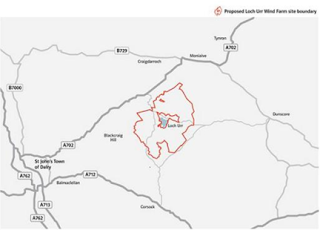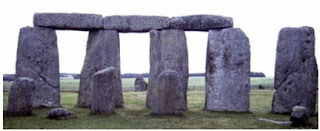The damage that the cavitation would induce on samples of rock is a function of the time that the cloud plays on the surface. By slowly moving the sample under the nozzle, in a confined cell, different levels of damage could be achieved, based on the speed at which the sample moved.
Figure 1. Traversing specimen cell, with the front cover removed to show the sample in the holder.
When the sample was moved under the nozzle at 2-inches a minute, the cavitation cloud attacked the surface relatively uniformly, with only localized increases in damage. In Figure 2 the red lines mark the width of the cavitation cloud on impact, it then spreads and collapses over the surface to give the wider erosion path.
Figure 2. Traverse over the surface of a dolomite sample at 2-inches a minute. The red lines define the width of the jet. Note the additional depth of removal under the sample ID (15) where the ink chemical had slightly weakened the rock making it more susceptible to erosion.
As the speed of the sample movement is slowed, however, the cavitation attack starts to find weakness planes in the rock and preferentially begins to erode these. As these channels are formed so the jet will flow into them to escape from the following flow of water in the consequent jet flow. As the cloud moves into these narrower spaces, so the pressure increases, inducing more of the bubbles to collapse and thus intensifying the erosion attack along that weakness plane (Figure 3).
Figure 3. Traverse of a cavitating jet over dolomite at a speed of 0.5-inches per minute. Note how the jet is now eating into zones of weakness which are beginning to define pieces of rock that are then liberated as cracks grow all around them.
As the traverse speed is further reduced to 0.4-inches per minute the erosion pattern which is developing in Figure 2 becomes consistent under the full width of the cavitation cloud, and the intersection of developing cracks means that the rock is now being removed in larger pieces and the erosion rate suddenly increases significantly.
Figure 4. Effects of moving the cavitating jet over the rock at 0.4-inches per minute. The cavitation is now developing cracks in the rock that join and break out larger pieces of rock, to a depth of around 0.5 inches over the cloud width.
This ability to focus the jet attack on weaknesses in the rock structure can be useful if, for example, the rock under attack is a mineral ore. Because the ore is defined with weakness planes around the individual constituent grains of the minerals and host rock, at a slow traverse speed the cavitation cloud will preferentially attack those boundaries, in the process liberating the individual grains, and separating the rock into its constituent materials. This liberation can be achieved as the rock is being mined (we have demonstrated this in the lab) so that the valuable mineral can be separated from the waste rock at the mining machine. This means that the waste can be left, in a larger size range than is conventionally left after separation, at the mining site, and does not have to be transported to the surface and ground to powder in order to separate out the valuable minerals. The energy savings that this achieves can be potentially as high as 75% of the total energy currently used at the mine.
Where the mining breaks out the rock without achieving complete liberation a secondary process can be used where the particles of material are fed into a secondary tube, where the particles pass through a second cavitation cloud. The attack of the very small bubbles on the mineral particles is such that the fragments of ore are rapidly broken (comminuted) into much smaller sizes in a process which, because there are so many events occurring sequentially , can appear almost instantaneous.
Tests at Missouri University of Science and Technology, for example, have shown that 0.5-inch sized pieces of coal can be reduced to 5-micron size in a single step. There is a video attached to this post of one of these tests. Figure 5 shows the equipment, with the coal in the inner metal tube, while the surrounding space is filled with water under slight pressure.
Figure 5. Equipment to comminute coal to 5-microns (The size of the feed coal can be seen in the plastic box on the right).
Water to the cell does not have to be at any great pressure. The test has been successfully run with the water fed from a pressure washer obtained from the local hardware store for less than $100.
Figure 5a. Early in the test the water flowing out of the inner tube is filled with fine particles of coal as the cavitation breaks the pieces down to the required size.
B) A short while later and the outer tube begins to fill with the fine material.
One of the advantages of coal at 5-microns is that it can be mixed with water in about a 50% slurry and fed into a diesel engine, which will then run. GE has tested a locomotive and shown that it is possible to run the engine on the mixture, should conventional diesel no longer be economically available.
The process also works when a harder rock, such as dolomite (a host for galena and other minerals) is placed in the inner tube. The cloud color in this case is white.
Figure 6. Using cavitation to crush dolomite. The original particle sizes are in the box on the left, the cloud of particles is at around 5-microns.


























































